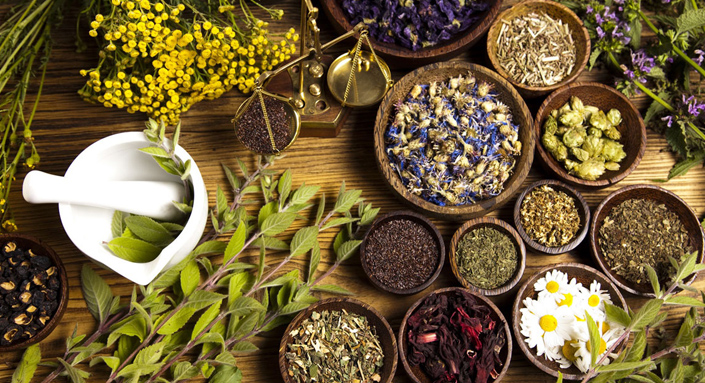
Source: fibre2fashion
Textiles come to our help in every walk of life. Textiles are vulnerable to toxins and micro-organisms that cause infections and allergic reactions. A variety of textile products such as herbal textiles and clothing have arrived in the market to help you maintain a healthy lifestyle and hygiene. Most home textile products come in contact with the skin. So, it is advisable that herbally treated fabrics are used since they are not chemically treated and are eco-friendly.
What are herbal textiles?
Textiles and clothing infused with medicinal herbs are becoming popular especially, in urban India. Textiles dyed from the extractions from various herbs are called herbal textiles. Their dyeing does not use any chemicals. The dyeing process uses vegetable dyes, copper sulphate and ferrous sulphate. Hence, there is a big difference in herbal dyes and vegetable dyes.
The concept of herbal textiles has been derived from Ayurveda, the ancient Indian method of Vedic healthcare. Ayurvastra is a branch of Ayurveda. In Sanskrit, ayur means health and veda means wisdom while vastra means clothing. Ayurvastra is made from organic cotton fabric infused with special herbs and oils to give health benefits. Ayurvastra has been used since long to treat diabetes, skin infections, psoriasis, hypertension, asthma, arthritis, rheumatism, high blood pressure, eczema and even some types of cancer.
Benefits of herbal clothing
The health benefits of herbal clothing and its usage depends on the theory of touch. The body loses toxins when it comes in contact with herbal clothing and this improves metabolism. Herbal clothing is also known to help fight against many common diseases like diabetes, hypertension, skin allergies, asthma and heart ailments.
The human body naturally heals itself when sleeping or meditating. Thus, when the body is at rest, herbal clothing will work most effectively. The skin is known as the largest organ of the body. It acts as a fence and protects the body but it can also be the channel for outside germs and toxins to enter the body. Herbal clothing helps to stand like a guard against harmful toxins about to enter the body through the skin. That is why they are beneficial for health.
That is why herbal textile is mainly used in making sleepwear, undergarments, bed coverings, towels, meditation clothing etc that remains close to the skin absorbing all the benefits it gives out. Herbal textiles are also used in home textile products like mattresses, coir mats, door mats, bath towels, bed spreads and carpets. When making coir mats using herbal fabric, the fibers are first soaked in herbal dyes and then woven into coir mats.
Demand for herbal textiles is increasing in India. However, this industry needs support from the government to survive in the market since it faces strong competition from other textiles. Ayurvastra is believed to strengthen the immune system. Many Ayurveda centres in Bangalore are asking their patients to use Ayurvastra for healthy living. The Handloom Weavers' Development Society produces a variety of home textiles using herbal fabrics in India. They also export herbal clothing like saris, bed sheets and dress materials to the United States of America, Italy, United Kingdom, Singapore, Malaysia, Jordan, Germany, Taiwan and Saudi Arabia. With increasing demand for herbal clothing, companies such as Ayurvastraonline have started offering products online.
The state government and Central ministries in India are promoting herbal textiles as it will increase the market for handloom industries which will create a niche market for eco-friendly fabrics. Not only the government but researchers must also contribute in developing these textiles and bring in innovations. The positive point that favours this industry is the affordability of these textiles. The cost of production is low so the price of these textiles is also comparatively less.
